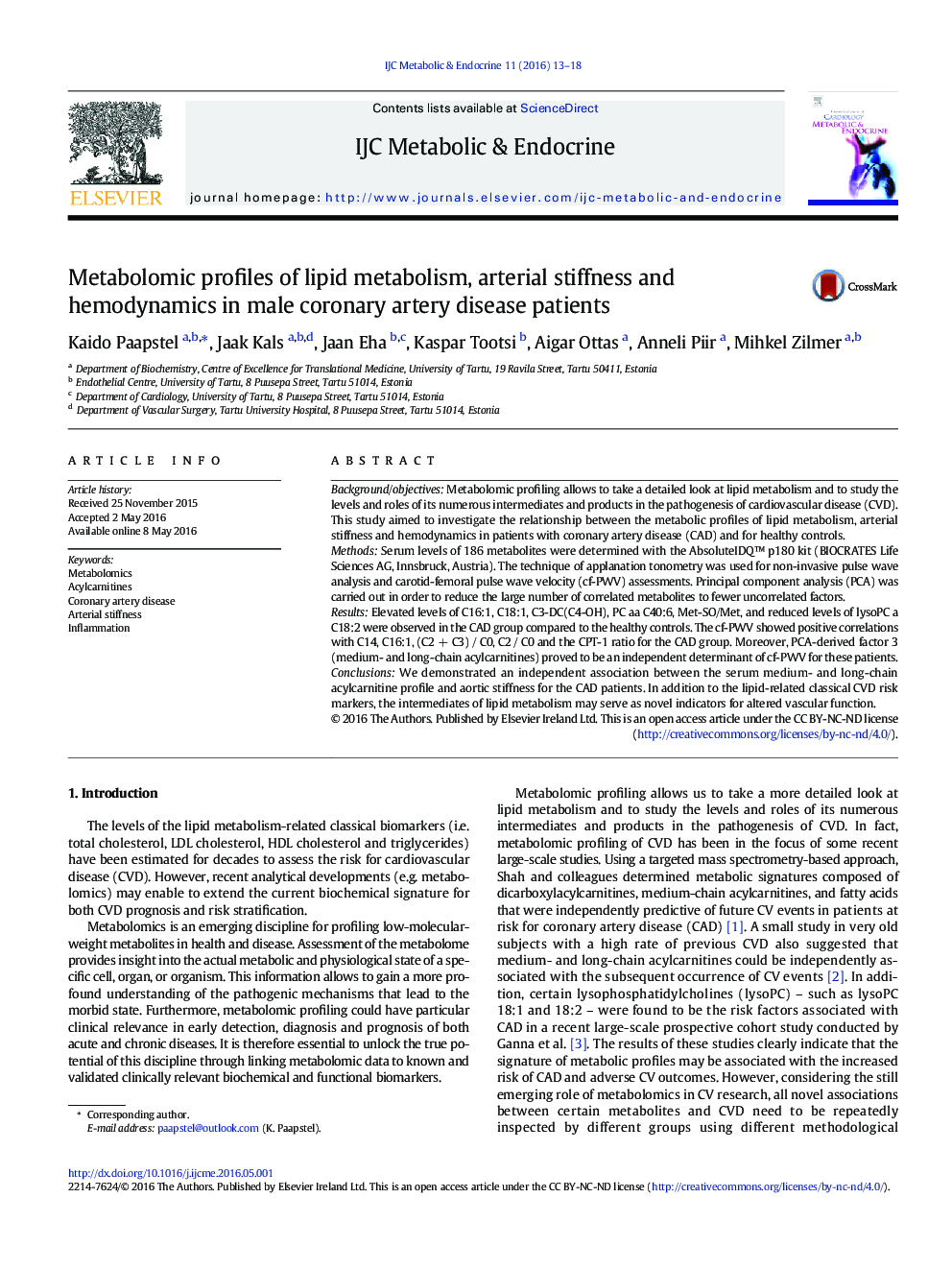| Article ID | Journal | Published Year | Pages | File Type |
|---|---|---|---|---|
| 2927186 | IJC Metabolic & Endocrine | 2016 | 6 Pages |
Background/objectivesMetabolomic profiling allows to take a detailed look at lipid metabolism and to study the levels and roles of its numerous intermediates and products in the pathogenesis of cardiovascular disease (CVD). This study aimed to investigate the relationship between the metabolic profiles of lipid metabolism, arterial stiffness and hemodynamics in patients with coronary artery disease (CAD) and for healthy controls.MethodsSerum levels of 186 metabolites were determined with the AbsoluteIDQ™ p180 kit (BIOCRATES Life Sciences AG, Innsbruck, Austria). The technique of applanation tonometry was used for non-invasive pulse wave analysis and carotid-femoral pulse wave velocity (cf-PWV) assessments. Principal component analysis (PCA) was carried out in order to reduce the large number of correlated metabolites to fewer uncorrelated factors.ResultsElevated levels of C16:1, C18:1, C3-DC(C4-OH), PC aa C40:6, Met-SO/Met, and reduced levels of lysoPC a C18:2 were observed in the CAD group compared to the healthy controls. The cf-PWV showed positive correlations with C14, C16:1, (C2 + C3) / C0, C2 / C0 and the CPT-1 ratio for the CAD group. Moreover, PCA-derived factor 3 (medium- and long-chain acylcarnitines) proved to be an independent determinant of cf-PWV for these patients.ConclusionsWe demonstrated an independent association between the serum medium- and long-chain acylcarnitine profile and aortic stiffness for the CAD patients. In addition to the lipid-related classical CVD risk markers, the intermediates of lipid metabolism may serve as novel indicators for altered vascular function.
